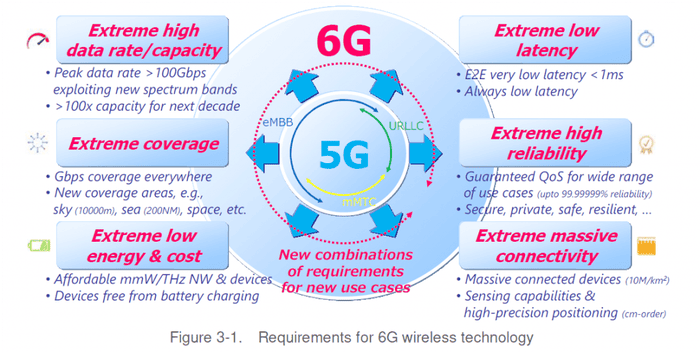NTT DoCoMo declares what 6G should be all aboutNTT DoCoMo declares what 6G should be all about
Japanese operator NTT DoCoMo has become one of the first industry heavyweights to lay out its vision for 6G technology and service expectations.
January 27, 2020

Japanese operator NTT DoCoMo has become one of the first industry heavyweights to lay out its vision for 6G technology and service expectations.
In a recently published whitepaper, Japan’s largest mobile operator outlined what it believed how 6G would look like, including technology requirements, service scenarios, and the next step research agenda. NTT DoCoMo becomes the latest, as well as one of the first leading telecom operators, to set down a marker in the nascent but active 6G discussion.
This document was published 40 years after the then Nippon Telegraph and Telephone Public Corporation launched what it claimed to be the world’s first cellular mobile communications service. The company believes the mobile telecom industry normally goes through a generational technology change every 10 years, while the model of value creation would undergo a step change every 20 years. It sees 5G such a step change, and 6G being an upgrade, though immensely better. The operator expects 6G service to start rolling out around 2030.
Somewhat confusingly, the NTT DoCoMo authors called the ramp up from 5G to 6G “5G Evolution”, a term that has been used by companies like AT&T and Ericsson to refer to the stage when the industry was running up from 4G to 5G, and appeared as a debatable logo on AT&T phones before the carrier’s 5G service was launched.

Source: NTT DoCoMo
Specifically, the NTT DoCoMo whitepaper lists these six technology benchmarks for 6G to achieve:
Extremely high-speed and high-capacity communications, e.g. peak data rate to go >100Gbps;
Extreme coverage extension, including coverage in high altitude, under sea, and in space;
Extremely low power consumption and cost reduction, including alternative charging technologies;
Extremely low latency, e.g. sub 1ms end-to-end latency;
Extremely high reliability, e.g. availability to improve from “five-nine” to “seven-nine” (99.99999%)
Extremely massive connectivity and sensing, e.g. handling 10 times as many connections as 5G does in comparable space
The operator sees these technology properties critical to realise the use cases ranging from the fusion between digital and physical environment and communication between humans and things to bridging the digital gap between different social groups and addressing other societal issues.
NTT DoCoMo believes the following should be the R&D focus areas in the years to come:
New network topology
Coverage extension including non-terrestrial network
Frequency extension and improved spectrum utilization
Further advancement of wireless transmission technologies
Enhancement for URLLC and industrial IoT networks
Expanded integration of variable wireless technologies
Multi-functionalization and AI for everywhere in mobile network
What NTT DoCoMo has laid out, despite with more details, is not too different from what the Finnish 6Genesis programme announced at last year’s Mobile World Congress, including the expected timing of 6G rollout. The industry conversation has since picked up speed, with the first 6G Wireless Summit held in the Finnish Lapland in March.
The so-called “world’s first 6G White Paper” was published in September, to which the new NTT DoCoMo whitepaper has much in common, in particular the research agenda. However, the clout of one of the world’s largest mobile operators will lend weight to the ongoing discussion of what 6G should be about. While China has also thrown its weight behind 6G, we can expect to hear more about this topic at the upcoming MWC 2020.
About the Author
You May Also Like










.png?width=300&auto=webp&quality=80&disable=upscale)


_1.jpg?width=300&auto=webp&quality=80&disable=upscale)